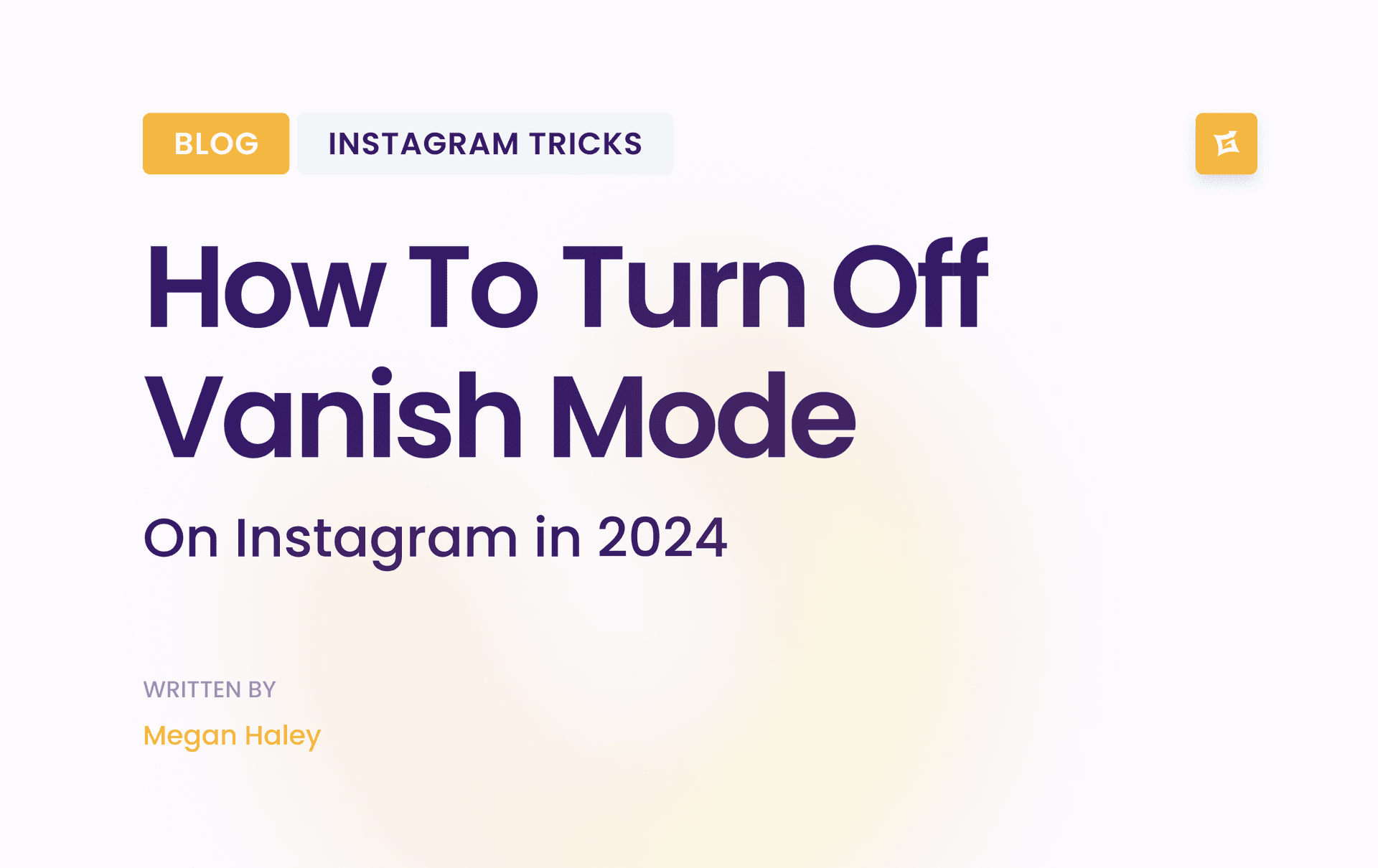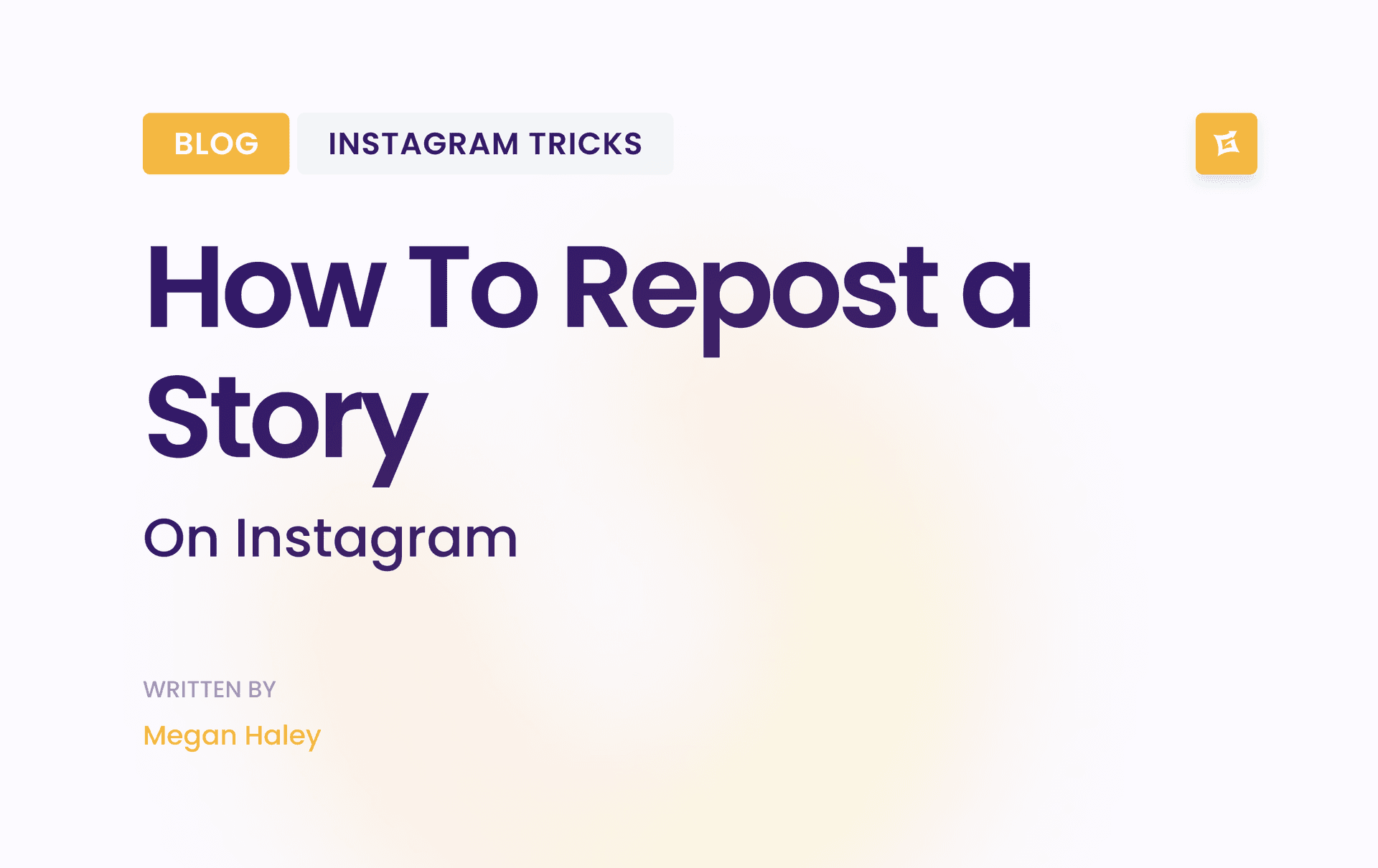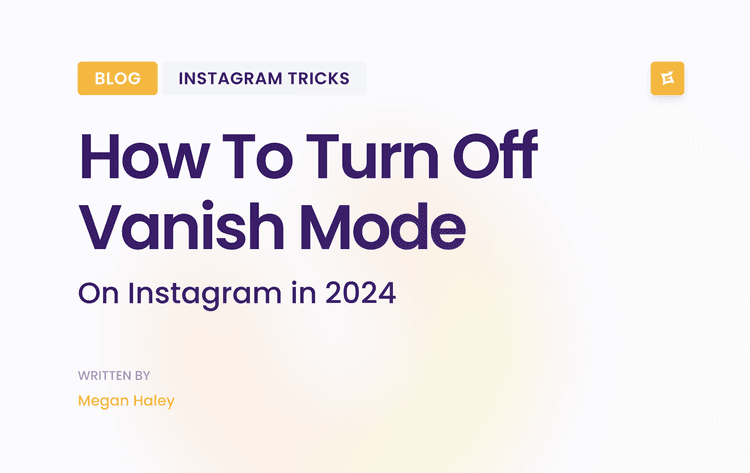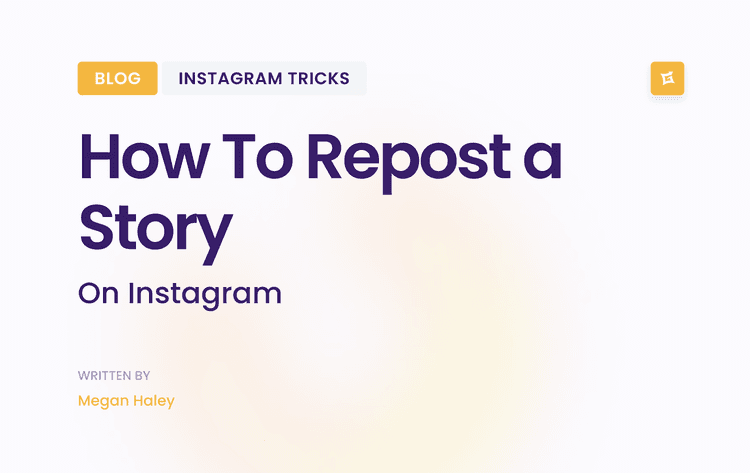Level Up Your Social Media Game
Refining Your Social Media Approach
Whether you're an influencer looking for organic growth, a startup building brand awareness, or a marketing professional refining your approach, this checklist will give you the tools you need to thrive in the evolving world of social media. Get ready to renew your social media followers from scattered efforts into a powerful, results-driven machine. We'll cover essential topics, including:
Strategic planning
Content optimization
Community building
Data analysis
Content Calendar Planning and Scheduling

Content calendar planning and scheduling is the foundation of a successful social media marketing strategy. It's a structured approach to planning, creating, and scheduling social media content. This includes mapping out content themes, different post types, and publishing dates across various platforms. The goal? Consistent brand messaging and maximum engagement. This is a crucial first step in any social media strategy, providing the framework for everything that follows. Without a plan, your social media efforts become reactive and inconsistent, making it difficult to build a strong brand presence and achieve your marketing objectives.
This practice originated from traditional editorial calendars used in print and broadcast media. As social media gained prominence, the need for a similar structured approach to online content became clear. Tools like CoSchedule, Buffer, Hootsuite, HubSpot, and Sprout Social have made the process more efficient, offering features specifically for social media management.
Features of Effective Content Calendar Tools
Effective content calendar tools offer several key features:
Editorial calendar templates: Provide daily, weekly, and monthly planning views.
Content categorization: Allow tagging content by theme, format (video, image, text), and campaign.
Scheduling tools integration: Enable direct publishing to different social media platforms.
Team collaboration capabilities: Facilitate workflow management and content approvals.
Performance tracking columns: Offer dedicated space to record key metrics and analyze effectiveness.
Pros and Cons of Using a Content Calendar
Like any tool, content calendars have advantages and disadvantages:
Pros:
Reduces daily decision-making stress: Knowing what to post and when frees up your time.
Ensures consistent posting schedule: Helps maintain an active presence and builds audience anticipation.
Allows for strategic alignment with business goals: Ensures your content supports your overall marketing objectives.
Enables content batch creation: Streamlines content production by allowing for dedicated creation periods.
Facilitates team collaboration: Improves communication and coordination within your team.
Cons:
Requires significant upfront investment: Developing a comprehensive calendar requires planning and effort.
May limit spontaneity and real-time engagement: Over-reliance on the calendar can hinder your ability to react to trending topics.
Needs regular updating based on performance metrics: A static calendar becomes ineffective. Regular review is essential.
Can become rigid if not regularly reviewed: Flexibility is key to adapting to changing circumstances.
Real-World Examples and Practical Tips
Several well-known companies demonstrate the effectiveness of content calendars:
HubSpot: Their marketing team utilizes quarterly content calendars with monthly reviews for long-term planning and flexibility.
Buffer: They maintain a public social media calendar, demonstrating transparency and open communication with their audience.
Coca-Cola: Their meticulous seasonal campaign planning for major events exemplifies aligning content with cultural moments.
Here are some practical tips for implementing a content calendar:
Use color-coding: Differentiate content types (blog posts, videos, infographics) or campaigns for clear visual identification.
Include detailed information: Add columns for copy, visuals, hashtags, and team member responsibilities.
Balance planned and responsive content: Allocate time for scheduled posts and engage with real-time events.
Regularly review and adjust: Analyze weekly performance data and adapt your calendar accordingly.
Content diversity: Maintain a variety of promotional, educational, and engagement-focused content to meet different audience needs.
A well-structured content calendar rebuilds your social media marketing from reactive to proactive. This creates a foundation for sustainable growth and a powerful brand following.
Platform-Specific Optimization Strategy

A one-size-fits-all approach to social media doesn't work anymore. Each platform has its unique personality. Platform-specific optimization is essential for any successful social media marketing strategy. This means recognizing that each platform has its audience, its expectations, and its best practices.
Tailoring your content and posting style to these nuances is how you maximize engagement and reach your marketing objectives. It's a foundational element of any effective and efficient social media checklist. Without this targeted approach, you risk wasting time and resources on content that misses the mark.
This involves understanding and using the specific features of each platform. This includes understanding content formatting guidelines, analyzing audience demographics for each platform, and utilizing native features like Stories, Reels, and Polls. It also means tracking platform-specific metrics and developing workflows to adapt content across platforms.
Features of a Platform-Specific Strategy
Platform-Specific Content Formatting Guidelines: This involves understanding optimal image sizes, video lengths, and character limits for each platform.
Audience Demographic Analysis by Platform: Knowing who your audience is on each platform and what they're looking for is vital.
Native Feature Utilization: Make the most of platform-specific features like Instagram Reels, LinkedIn articles, or Twitter polls.
Platform-Specific Metrics Tracking: Monitor key performance indicators (KPIs) specific to each platform to understand what's working.
Format Adaptation Workflows: Establish streamlined processes for repurposing content across various social media platforms.
Pros and Cons of a Platform-Specific Strategy
Let's take a look at the benefits and drawbacks of this approach.
Pros:
Maximizes Engagement on Each Platform: Tailored content resonates better with audiences.
Respect Audience Expectations in Different Environments: Avoid looking out of place or irrelevant on each platform.
Leverages Platform-Specific Algorithms Effectively: Increase your organic reach and visibility.
Improves Content Performance and ROI: Drive better results from your social media efforts.
Creates Cohesive but Platform-Appropriate Brand Followers: Maintain a consistent brand identity while adapting to each platform's context.
Cons:
Increases Production Workload for Multiple Formats: Creating diverse content takes more time and resources.
Requires Expertise in Each Platform's Best Practices: You'll need a strong understanding of each platform's nuances.
More Complex to Manage Across Multiple Channels: Managing multiple platforms increases complexity.
Can Dilute Messaging if Not Carefully Aligned: Requires careful coordination to keep a consistent brand message.
Real-World Examples of Platform-Specific Strategies
Several brands have successfully implemented this approach:
GoPro: GoPro creates long-form tutorials for YouTube, showcasing the camera's versatility, and shares short, dynamic clips on Instagram to grab attention quickly.
Wendy's: Wendy's uses Twitter for witty, real-time commentary and engages with followers while using Facebook for promotions and community building.
National Geographic: National Geographic adapts its visual storytelling across platforms, using Instagram for captivating photography and Facebook for longer-form articles and documentaries.
Tips for Implementing a Platform-Specific Strategy
Create a Platform Guide: Document ideal image sizes, video lengths, and caption formats.
Analyze Performance: Analyze your best-performing content on each platform and identify patterns.
Repurpose Content: Repurpose core content into platform-specific formats instead of duplicating posts.
Use Native Tools: Use the creation tools within each platform whenever possible.
Test Regularly: Test different content types on each platform quarterly.
The concept of platform-specific optimization grew with the rise of social media influencers and the diversification of social media platforms. Industry leaders like Gary Vaynerchuk, Social Media Examiner, Later, Planoly, and Mari Smith emphasize the importance of tailoring content to each platform. You might find value in Crafting the Perfect Bio to complement your platform-specific strategy.
This approach isn’t just for big brands. Small businesses, startups, content creators, and marketing professionals can all benefit. By understanding the nuances of each platform and tailoring your content accordingly, you can unlock the true potential of social media marketing.
Audience Persona Development and Targeting
Understanding your audience is crucial for successful social media marketing. Randomly posting content is ineffective and wastes resources. Audience persona development and targeting are essential for any social media marketing strategy. It involves creating detailed profiles of your ideal customer segments. These profiles consider demographics, psychographics, online behaviors, preferences, and pain points. This understanding shapes your content and engagement strategies. This ensures your message connects with those most likely to become customers or brand advocates.
Features of Effective Persona Development
Effective persona development incorporates several key elements:
Demographic Data Analysis: Age, gender, location, education, income, etc.
Psychographic Profiling: Values, interests, lifestyle, personality traits, attitudes, etc.
Behavioral Pattern Identification: Online habits, purchasing behavior, content consumption patterns, etc.
Customer Journey Mapping: Understanding the customer's journey from awareness to purchase.
Content Preference Analysis: Preferred content formats, topics, and styles.
Platform Usage Patterns: Which social media platforms do they use and how do they interact with them?
Why Persona Development Matters
Developing well-defined personas offers several advantages:
Create Highly Relevant Content: Understanding your audience's needs and interests allows you to create content that resonates, increasing engagement.
Improve Conversion Rates and Engagement Metrics: Tailored content drives desired actions like clicking a link, making a purchase, or signing up for a newsletter.
Reduce Wasted Effort on Ineffective Content: Targeting specific personas maximizes your ROI by avoiding content that misses the mark.
Inform Platform Selection and Content Format Decisions: Knowing where your audience spends time online guides your platform and format choices.
Facilitate More Effective Ad Targeting: Personas offer valuable insights for highly targeted ad campaigns that reach the right people.
Pros and Cons of Persona Development
Like any strategy, persona development has its pros and cons:
Pros:
Relevant content that resonates.
Improved conversion rates and engagement.
Reduced wasted effort.
Informed platform and format decisions.
More effective ad targeting.
Cons:
Time-consuming to develop comprehensive personas.
Requires ongoing research to stay current.
It may limit creativity if followed too rigidly.
This can lead to overlooking emerging segments.
Real-World Examples of Effective Persona Use
Several brands leverage personas effectively:
Spotify's Wrapped campaign: Targets music enthusiasts with personalized data stories, generating buzz and engagement.
Sephora's Beauty Insider community: Offers content tailored to different beauty enthusiast personas, building a strong brand community.
Mailchimp's content strategy: Targets various small business owner personas with tailored resources and support.
Tips for Implementation
Here are some practical tips for implementing persona development:
Conduct surveys and interviews: Gather data from existing and potential customers for deeper insights.
Focus on 3-5 primary personas: Concentrate on the most important customer segments.
Update personas regularly: Review and update personas quarterly based on data and feedback.
Develop content themes: Create themes that address specific persona pain points and interests.
Test and iterate: Test content with small groups before wider distribution.
History and Popularization
The concept of buyer personas has existed for decades. Its importance in marketing has grown due to the rise of inbound marketing and personalized digital experiences. Organizations like HubSpot and the Buyer Persona Institute, along with individuals like Adele Revella and Seth Godin, have been instrumental in popularizing persona development.
By investing in audience persona development and targeting, you can transform your social media marketing from guesswork into a strategic process with measurable results.
Social Listening and Trend Monitoring
Social listening and trend monitoring are systematic processes. They track conversations, mentions, and emerging trends across social media platforms. It's about using social media as a two-way street for gathering intel, not just for broadcasting your message. This helps inform your content strategy, identify engagement opportunities, and manage your online reputation. It’s a crucial step for any social media marketing plan because it helps you understand your audience, anticipate their needs, and proactively join relevant conversations.
This approach includes several key features:
Brand mention tracking: Stay updated on what's being said about your brand, both the good and the bad.
Competitor monitoring: Keep an eye on your competitors' activities, how their audience engages with them, and the general market landscape.
Industry keyword tracking: Follow discussions around relevant keywords in your industry. This helps you find emerging trends and new opportunities.
Sentiment analysis: Understand the overall sentiment (positive, negative, or neutral) around your brand, your products, or your industry.
Trending topic identification: Find popular topics and hashtags related to your niche. This allows you to join relevant conversations and boost your visibility.
Customer feedback aggregation: Collect valuable customer feedback about your products, services, and overall brand experience.
Real-World Examples of Social Listening in Action
Here are a few examples of how brands have used social listening successfully:
Airbnb: Airbnb keeps track of travel trends and public sentiment. This informs their content strategy and product development decisions. By understanding traveler preferences and how they feel about current offerings, Airbnb can better tailor its services and marketing.
Oreo: Their famous "Dunk in the Dark" tweet during the Super Bowl power outage is a classic example of real-time marketing based on social listening. Oreo seized the trending moment, generating massive engagement and brand awareness.
Netflix: The streaming giant constantly adjusts its social media content based on what viewers are saying about their shows. This allows them to stay relevant and engage with their audience more deeply.
Pros and Cons of Social Listening
Like any strategy, social listening has its advantages and disadvantages:
Pros:
Provides real-time market insights.
Identifies potential crises early on.
Uncovers content opportunities based on audience interests.
Guides product development based on customer feedback.
Enables proactive, not reactive, engagement.
Cons:
Can produce a large amount of data.
May require dedicated tools and staff.
This could lead to strategy shifts based on short-lived trends.
Can be difficult to measure direct ROI.
Practical Tips for Implementing Social Listening
Here are a few practical tips to help you get started with social listening:
Monitor your brand name, including common misspellings.
Use Boolean search strings in Google to filter irrelevant mentions and refine your search results.
Create a system for responding to different mentions (e.g., customer service issues, positive feedback, negative reviews).
Generate regular trend reports to inform your content planning and strategy adjustments.
Use sentiment analysis to track how your brand is perceived over time and identify areas for improvement. You might be interested in: Our guide on Hashtag Generator to boost your social listening efforts.
Evolution and Popularization of Social Listening Tools
Social listening has grown from basic keyword monitoring into a complex process using advanced technologies like artificial intelligence and machine learning. Tools like Brandwatch, Sprout Social, Mention, Talkwalker, and Hootsuite have made social listening more accessible to businesses of all sizes. These platforms offer powerful features for tracking mentions, analyzing sentiment, and identifying trends, helping brands use social data to make strategic decisions.
Content Pillar Framework
A robust social media follower takes more than just posting randomly. The Content Pillar Framework provides a strategic approach to content planning, organizing your output around core themes, or "pillars." These pillars should align with your brand values, catering to your audience's interests while serving your business objectives. This framework ensures a consistent brand message and a diverse content mix, essential for any successful social media marketing strategy.
The Content Pillar Framework begins with identifying key themes relevant to your brand and audience. Instead of brainstorming content ideas in a vacuum, you categorize them under these pre-defined pillars. This allows for strategic cross-platform planning and the establishment of theme-based content ratios, ensuring a balanced and engaging content calendar. It also makes content repurposing more systematic, maximizing your reach and impact.
Features of a Content Pillar Framework
Core Theme Identification: Define 4-6 key themes that resonate with your brand and target audience.
Content Categorization System: Assign every piece of content to a specific pillar.
Cross-Platform Content Planning: Map out content across different social media channels based on pillar themes.
Theme-Based Content Ratios: Allocate percentage targets for each pillar to maintain a balanced content mix.
Content Repurposing Guidelines: Establish a system for reusing and adapting content across various formats and platforms.
Pros of Using a Content Pillar Framework
Coherent Brand Storytelling: Pillars ensure your brand narrative remains consistent and engaging.
Simplified Content Planning and Creation: The framework provides clear direction for content ideation.
Balanced Content Mix: Prevents over-reliance on a single content type and keeps your audience interested.
Alignment with Business Goals: Connects social media activity to your marketing strategy.
Systematic Content Repurposing: Facilitates easy adaptation of content for different platforms and formats.
Cons of Using a Content Pillar Framework
Potential for Formulaic Content: Requires consistent review and adaptation to avoid feeling stale.
Possible Constraint on Creativity: Over-reliance on pillars can sometimes limit spontaneous content creation.
Upfront Strategic Investment: Developing a well-defined framework takes time and effort.
Ongoing Evaluation and Adjustment: Monitoring performance and adjusting your strategy is crucial for success.
Real-World Examples of Content Pillars
Starbucks: Utilizes pillars around product (new drinks, promotions), community (local events, customer stories), sustainability (ethical sourcing, environmental initiatives), and culture (company values, employee spotlights).
Adobe: Balances inspiration (creative showcases, tutorials), education (product demos, tips & tricks), community (user forums, collaborations), and product content (new releases, feature updates).
REI: Structures content around outdoor activities (hiking, camping, skiing), sustainability (environmental advocacy, gear recycling), product education (gear reviews, how-to guides), and community stories (customer adventures, employee profiles).
Tips for Implementing a Content Pillar Framework
Limit Pillars: Stick to 4-6 core themes relevant to your brand and target audience.
Percentage Targets: Assign percentage targets for each pillar (e.g., 30% educational, 25% inspirational, 20% product-focused).
Content Templates: Streamline content production with pre-designed templates for each pillar.
Analyze Engagement: Track performance metrics and adjust your strategy based on engagement by pillar.
Regular Review: Revisit pillars quarterly to ensure they remain relevant to evolving trends and audience interests.
Evolution and Popularity of the Content Pillar Framework
The Content Pillar Framework gained prominence through the work of content marketing influencers like the Content Marketing Institute, Jay Baer, Ann Handley, Joe Pulizzi, and Michael Stelzner. They emphasized structured content planning for long-term marketing success. Initially rooted in blog content strategy, the framework has become a crucial component of social media marketing. It provides a foundation for creating a consistent, engaging, and effective social media follower. By aligning content with core themes, you build a stronger brand identity, cater to your audience, and drive better results. The Content Pillar Framework is an essential tool for achieving organic growth and boosting your social media impact.
Integrated Metrics and Analytics Framework
An effective social media account isn’t built on intuition. It requires a solid understanding of what resonates with your audience, what falls flat, and why. This is where an Integrated Metrics and Analytics Framework becomes essential. This system lets you track, analyze, and act on performance data across all platforms, connecting your social media activities to your business goals. It’s the engine that drives continuous improvement for your content strategy, ensuring every post, story, and interaction contributes to your bigger picture.
This framework goes beyond vanity metrics like likes and followers. It links social metrics to tangible business results, demonstrating the real value of your social media marketing. Features like multi-platform KPI tracking, custom dashboard creation, conversion attribution modeling, competitive benchmarking, ROI calculation methodology, and regular reporting templates provide a complete view of your performance.
Why This Matters for Different Stakeholders
Influencers: Understanding which content connects with their audience and drives authentic engagement.
Small Businesses and Startups: Identifying what leads to conversions and sales.
Brands: Leveraging insights to boost brand awareness and customer loyalty.
Content Creators: Pinpointing high-performing content patterns and refining their strategies.
Marketing Agencies: Demonstrating clear value to clients by showcasing the impact of their campaigns.
Real-World Examples of Success
Airbnb: Developed a custom attribution model to track social engagement through to bookings, proving the direct impact of social media on their bottom line.
Domino's Pizza: Successfully tracks how social media campaigns influence online orders, enabling them to optimize campaigns for maximum sales impact.
L'Oréal: Uses an integrated social commerce metrics framework to measure the effectiveness of their social media activities in driving product sales and brand engagement.
The Rise of Integrated Metrics and Analytics
The growth of tools like Google Analytics, Databox, Cyfe, and Looker, combined with thought leaders like Avinash Kaushik (a prominent voice for data-driven decisions), has made sophisticated social media analytics accessible to businesses of all sizes. This shift, driven by the increasing importance of data in marketing, has made integrated metrics and analytics a core component of any successful social media strategy.
Pros and Cons of an Integrated Framework
Pros:
Demonstrates social media's business impact
Informs data-driven content decisions
Identifies high-performing content patterns
Justifies resource allocation
Highlights areas for improvement
Cons:
This can lead to an overemphasis on vanity metrics if not implemented carefully
Requires technical setup and maintenance
Can be complex to integrate across multiple platforms
Attribution challenges remain, especially with accurately measuring social influence on offline conversions
Practical Tips for Implementation
Start with Your Business Objectives: Define your goals first, then identify the social media metrics that align with them.
Tailor Your Metrics: Create specific metric sets for different content formats and campaign objectives.
Use UTM Parameters: Implement UTM parameters consistently across all social media links for accurate traffic source tracking.
Regular Analysis: Schedule monthly in-depth analysis sessions with stakeholders to review performance and find opportunities for improvement.
Test and Optimize: Test one variable at a time when optimizing your content to understand the impact of each change.
By implementing a well-structured Integrated Metrics and Analytics Framework, you transition from simply doing social media to strategic, data-driven social media marketing. This enables informed decisions, optimized efforts, and a demonstrable contribution to your overall business success.
Community Management and Engagement Strategy
A thriving online community fuels organic growth, builds brand loyalty, and can even inform product development. A Community Management and Engagement Strategy provides the roadmap for building and nurturing these communities across your social media platforms. It’s a focused approach that moves beyond simply posting messages and prioritizes meaningful two-way communication, turning passive followers into active brand advocates. This makes it a vital part of any successful social media marketing checklist.
This strategy involves consistent engagement, proactive moderation, and ongoing relationship development. It’s like cultivating a garden: you plant the seeds (content), water them regularly (engagement), remove the weeds (negative comments/spam), and nurture the plants to grow strong (relationship building).
Key Features of a Robust Community Management and Engagement Strategy
Response Protocols and Templates: Prepare pre-written responses for frequently asked questions for consistency and efficiency.
Community Guidelines: Establish clear expectations for behavior within your community to maintain a positive and respectful environment.
Engagement Calendar: Plan proactive engagement activities, such as themed discussions, Q&As, or contests, to keep your community vibrant.
User-Generated Content (UGC) Programs: Encourage and showcase content created by your community members to build authenticity and social proof.
VIP Community Member Identification: Recognize and reward your most active members to foster loyalty and encourage continued participation.
Crisis Management Procedures: Have a plan to address negative feedback or potential PR crises swiftly and effectively.
Pros of a Strong Community Management Strategy
Builds Brand Loyalty and Advocacy: Engaged communities are more likely to recommend your brand and defend it.
Generates Authentic User Content: UGC provides valuable social proof and can reduce content creation costs.
Provides Direct Customer Feedback: Communities offer a direct line to your target audience, providing valuable insights.
Creates Defensive Moat Against Competitors: A strong community makes it harder for competitors to gain ground.
Reduces Marketing Costs Over Time: Organic reach and word-of-mouth marketing driven by a thriving community can reduce reliance on paid advertising.
Cons to Consider
Requires Consistent Time and Resource Investment: Building and maintaining a community requires dedicated personnel and ongoing effort.
Can be Difficult to Scale Personally: As your community grows, personal interaction becomes more challenging, requiring strategic automation.
Risks of Public Criticism or Crisis: Open communities are susceptible to negative feedback and potential PR crises.
Results Build Slowly Over Time: Community building is a long-term strategy; patience is key.
Real-World Examples
Glossier: Known for using its Instagram community to drive product development and marketing. They actively solicit feedback and feature user-generated content.
Peloton: Built a highly engaged community around its fitness products, fueled by instructor interaction and online challenges.
Sephora: The Beauty Insider community spans multiple channels, offering exclusive content, rewards, and a platform for beauty enthusiasts to connect.
Tips for Implementation
Create a Response Matrix: Categorize different types of engagement (questions, complaints, positive feedback) and develop tailored responses.
Set Clear Response Time Expectations (and Stick to Them): Responsiveness is crucial for building trust and engagement.
Develop a Voice and Tone Guide for Community Managers: Ensure consistency in brand voice and communication style.
Recognize and Reward Active Community Members: Implement a system for acknowledging and rewarding valuable contributions.
Schedule Regular Community-Exclusive Content or Events: Offer special perks and experiences to foster a sense of belonging.
The rise of platforms like Community.co, CMX Hub, and Vanilla Forums, alongside the thought leadership of individuals like David Spinks and Richard Millington, has formalized the field of community management. These resources offer valuable best practices for building thriving online communities.
By implementing a well-defined Community Management and Engagement Strategy, you cultivate a loyal following, generate authentic user content, and build powerful brand advocacy. This investment yields returns over time, renewing your social media followers from a broadcasting platform into a dynamic hub for two-way communication and genuine connection.
Influencer Collaboration Framework
An Influencer Collaboration Framework is a structured approach to working with social media influencers to meet your marketing goals. It provides a systematic process, from finding potential partners to measuring campaign success, ensuring efficient and effective influencer marketing. This framework is key to maximizing your return on investment and minimizing potential risks. This structured approach simplifies influencer marketing into manageable steps, making it accessible for businesses of all sizes.

A strong framework includes several key features:
Influencer Identification Methodology: This involves researching and identifying influencers relevant to your industry and target audience. Factors like audience demographics, content style, and engagement rates should be considered. You might be interested in: Our Guide on Influencers.
Vetting and Qualification Criteria: Setting clear criteria helps evaluate potential influencers. Look at authenticity, brand alignment, audience quality, and past performance to ensure a good fit.
Collaboration Agreement Templates: Pre-defined agreements outline the scope of work, deliverables, payment terms, and usage rights. This protects both the brand and the influencer.
Campaign Briefing Process: Clear and comprehensive briefs help ensure the influencer understands campaign goals, key messages, and desired outcomes.
Performance Tracking System: Tracking important metrics like reach, engagement, website traffic, and conversions measures campaign effectiveness.
Relationship Management Protocols: Nurturing long-term relationships with influencers creates stronger partnerships and better results.
Pros of Using an Influencer Collaboration Framework
Extended Reach: Access established audiences and increase your brand’s visibility.
Enhanced Credibility: Build credibility and social proof through influencer authority.
Diverse Content Creation: Benefit from influencer creativity and unique content.
Cost-Effectiveness: Influencer marketing, especially with micro-influencers, can be more budget-friendly than traditional advertising.
Authentic Connection: Build real connections with niche communities.
Cons to Consider
Reputation Risks: Negative influencer actions can impact your brand image.
Measurement Challenges: Directly attributing results to influencer marketing can be difficult.
Declining Organic Reach: Reduced organic reach may require paid promotion.
Inauthentic Partnerships: Forced partnerships can harm your brand's credibility.
Cost: Working with top-tier influencers can be expensive.
Examples of Successful Influencer Marketing
Daniel Wellington: This watch brand grew massively through a strategic micro-influencer campaign, gifting watches, and offering discount codes.
Gymshark: They built a strong community via their athlete program, featuring influencers as brand ambassadors.
Glossier: They successfully used product seeding with beauty enthusiasts to build excitement and boost sales.
Tips for Implementing an Influencer Collaboration Framework
Prioritize Brand Alignment: Find influencers whose values and audience align with your brand. Don’t just focus on follower count.
Clear Campaign Briefs: Provide detailed briefs outlining objectives while allowing for creativity.
Start Small and Test: Begin with smaller test campaigns.
Track Performance: Use custom links or codes to track campaign performance and attribute conversions.
Build Long-Term Relationships: Develop ongoing partnerships for greater impact.
The growth of platforms like CreatorIQ, Julius, and Traackr along with experts like Neal Schaffer and agencies like Collectively Inc., has cemented the need for a structured Influencer Collaboration Framework. This framework is essential for any social media marketing plan. It provides a powerful way to connect with audiences, build trust, and achieve measurable results in the influencer-driven social landscape.
Social Commerce Integration Strategy
Social commerce has changed how brands interact with their audience and boost sales. It's a strategy of embedding shopping experiences directly within social media platforms, effectively turning product discovery into a purchase without interruptions. This approach connects content, community, and commerce, shortening the customer journey and driving revenue. It's a crucial element for maximizing social media impact, whether you're an individual influencer or a large brand.
Social commerce simplifies buying, allowing customers to purchase products directly within the social media app. Features like shoppable posts, integrated storefronts, in-app checkout, and robust product tagging remove the need to redirect to external websites. This seamless experience capitalizes on impulse buying and leverages social proof—seeing others engage with and buy products—to influence decisions.
How it Works and Why it Matters
Social commerce has grown from simple product links in bios to fully integrated shopping experiences. Platforms like Instagram Shopping, Facebook Shops, Pinterest Shopping, TikTok Shop, and Shopify's social commerce integrations have led to this change. The rise of mobile commerce and increased time spent on social media created the perfect opportunity for this evolution. Brands can now build a community, showcase products natively, and facilitate direct sales on one platform.
Real-World Success
Nike: Uses Instagram Shop for limited-edition drops, creating urgency and exclusivity.
Kylie Cosmetics: Built a billion-dollar empire largely through social commerce, showcasing the power of direct engagement.
Allbirds: Uses Pinterest shopping ads to drive conversions, taking advantage of the platform's visual nature.
Pros and Cons of Social Commerce
Pros:
Reduced friction.
Direct attribution.
Seamless experience.
Impulse purchases.
Social proof.
Cons:
Platform dependency.
Synchronization challenges.
Customization limitations.
Customer service complexities.
Privacy concerns.
Practical Tips for Implementation
Start Small: Begin with your best-selling, visually appealing products.
Content is King: Create engaging content that showcases your products in action.
Consistency is Key: Maintain consistent product naming and descriptions across platforms.
Experiment with Formats: Try different content formats like carousels, videos, and Stories.
Incentivize Purchases: Offer exclusive social media promotions and discounts.
By implementing a thoughtful social commerce strategy, businesses can unlock new revenue, strengthen customer relationships, and stay ahead in social media marketing.
Content Repurposing and Cross-Platform Distribution Strategy

Creating new content for each social media platform can be incredibly time-consuming. A smart strategy is a content repurposing and cross-platform distribution. This involves adapting your content for various platforms and maximizing your reach and impact. It's a vital part of efficient social media marketing.
Instead of starting from scratch every time, you're extending the life of your best content. This saves valuable time and resources. It also reinforces your message through repetition, boosting brand recognition and authority.
Features of an Effective Repurposing Strategy
Effective repurposing involves several key elements:
Content Renewal Workflows: Documented processes for adapting content. For example, turning a blog post into a Twitter thread.
Format Adaptation Guidelines: Rules for optimizing content per platform. Think ideal video length for TikTok versus YouTube.
Modular Content Architecture: Creating content in smaller, reusable units. This is the foundation of "content atomization."
Content Atomization Processes: Deconstructing larger content pieces (like webinars) into smaller "atoms" (short clips, quotes, infographics).
Cross-Platform Publishing System: Tools to schedule and publish across multiple platforms from one central location.
Content Refresh Protocols: Guidelines for updating evergreen content to maintain its relevance.
Pros and Cons of Content Repurposing
Like any strategy, content repurposing has both advantages and disadvantages:
Pros:
Increased ROI: Get the most from your content creation efforts.
Consistent Messaging: Build a strong brand identity across all channels.
Reduced Workload: Publish more frequently without creating everything from scratch.
Format Testing: Experiment to see what resonates best with your audience on each platform.
Reinforced Messaging: Increase message retention and brand recall.
Cons:
Audience Fatigue: Repurposing without variation can bore your followers.
Platform Mismatch: Content needs tailoring to suit each platform's unique style.
Repetitive Content: Keep it fresh with angles, visuals, and calls to action.
Tracking Challenges: Use a robust analytics system to measure performance across all channels.
Real-World Examples of Content Repurposing
Many successful brands use content repurposing effectively:
Gary Vaynerchuk: Known for turning keynotes into dozens of micro-content pieces.
HubSpot: Renew research reports into blog posts, infographics, and webinars.
Tasty: Repurposes recipe videos, adapting them for each platform.
Tips for Effective Content Repurposing
Here's how to make content repurposing work for you:
Plan for Repurposing: Consider how a piece can be adapted.
Content Pillars: Create flagship content (ebooks, webinars) that can be broken down.
Content Repository: Organize content by theme for easy reuse.
Adapt for Each Platform: Tailor visuals, length, and format.
Strategic Timing: Avoid overwhelming your audience with repetitive content.
Influencers and Thought Leaders in Content Repurposing
Leaders like Gary Vaynerchuk, the Content Marketing Institute, Jay Baer, Repurpose House, and MeetEdgar highlight the power of this strategy. By following these tips and examples, you can significantly enhance your social media marketing efforts.
10-Point Social Media Marketing Strategy Comparison
Content Calendar Planning and Scheduling has a moderate to high implementation complexity, requiring upfront planning and review. The resource requirements include editorial templates, scheduling tools, and team collaboration. The expected outcome is consistent posting and strategic content alignment. The ideal use case is for brands looking to plan content. The key advantage is that it reduces daily decision-making stress and facilitates collaboration.
Platform-specific optimization strategy has a high implementation complexity, as it requires multiple formats and tailored adaptations. The resource requirements include expertise in various platforms and native creation tools. The expected outcome is maximized engagement and improved ROI per channel. The ideal use case is for multi-channel brands aiming for tailored messaging. The key advantage is that it leverages platform-specific features for enhanced performance.
Audience Persona Development and Targeting has a high implementation complexity, requiring detailed research and continuous updates. The resource requirements include data analytics, research tools, and periodic surveys. The expected outcome is more relevant content leading to higher conversion rates. The ideal use case is for campaigns targeting specific audience segments. The key advantage is that it informs content and ad targeting while improving engagement.
Social Listening and Trend Monitoring have a moderate implementation complexity, requiring real-time tracking and analysis. The resource requirements include monitoring platforms and skilled personnel for sentiment analysis. The expected outcome is real-time market insights and proactive crisis detection. The ideal use case is for brands needing market intelligence and reputation management. The key advantage is early trend identification and opportunity spotting.
Content Pillar Framework has a moderate implementation complexity, requiring strategic planning and regular evaluation. The resource requirements include content guidelines, templates, and planning systems. The expected outcome is cohesive storytelling and a balanced content mix. The ideal use case is for brands with diverse content needing focused messaging. The key advantage is that it simplifies planning while ensuring consistent brand messaging.
Integrated Metrics and Analytics Framework has a high implementation complexity, requiring technical setup and integration across platforms. The resource requirements include analytics dashboards, tracking tools, and attribution systems. The expected outcome is data-driven insights that connect social media to business goals. The ideal use case is for organizations aiming to quantify social media impact. The key advantage is that it demonstrates ROI and informs strategic adjustments.
Community Management and Engagement Strategy has a moderate to high implementation complexity, requiring continuous engagement and moderation. The resource requirements include dedicated community managers, engagement calendars, and interaction tools. The expected outcome is strong brand loyalty, authentic user content, and feedback loops. The ideal use case is for brands aiming to build and nurture vibrant communities. The key advantage is that it enhances trust and fosters genuine audience relationships.
Influencer Collaboration Framework has a moderate implementation complexity, requiring vetting influencers and managing partnerships. The resource requirements include influencer research tools and campaign management systems. The expected outcome is extended reach and increased credibility through endorsements. The ideal use case is for brands seeking authentic third-party promotion. The key advantage is that it provides diverse creative content and cost-effective promotion.
Social Commerce Integration Strategy has a high implementation complexity, requiring the integration of shopping features within platforms. The resource requirements include e-commerce systems, social storefronts, and conversion tracking tools. The expected outcome is a seamless shopping experience and direct sales attribution. The ideal use case is for retailers targeting the conversion of social traffic into sales. The key advantage is that it shortens the purchase journey and capitalizes on impulse buying.
Content Repurposing and Cross-Platform Distribution Strategy has a moderate implementation complexity, requiring effective content renewal workflows. The resource requirements include content management systems and creative adaptation resources. The expected outcome is maximized content ROI with consistent messaging across channels. The ideal use case is for brands with existing content seeking efficient reuse. The key advantage is that it reduces production workload while reinforcing key themes.
Dominate Your Social Media Accounts
This 2025 social media marketing checklist provides a robust framework for optimizing your social media strategy. From meticulous content calendar planning and platform-specific optimization to social listening and influencer collaborations, implementing these 10 key steps empowers you to rebuild your social account. Building a thriving online community and driving significant business results hinges on understanding your audience, crafting engaging content, and leveraging the power of data-driven insights.
Remember that consistency is key. Regularly applying these principles, coupled with continuous monitoring and analysis through integrated metrics, will contribute significantly to long-term success.
Adaptability is crucial in the ever-evolving social media landscape. Stay informed about trends like short-form video, the rise of augmented reality (AR) experiences, and the increasing importance of community-driven platforms.
By staying ahead of the curve and integrating new technologies and strategies, you can maintain a competitive edge and maximize your reach. Continuously analyze your results and adjust your approach based on what resonates best with your audience. Experimentation and iteration are essential for refining your strategy and achieving optimal performance.
Key Takeaways
Plan and Strategize: A well-defined strategy is the foundation of social media success.
Know Your Audience: Understanding your target demographic is crucial for effective communication.
Create Compelling Content: High-quality, engaging content is essential for capturing attention and driving engagement.
Analyze and Adapt: Regularly monitor your performance and adjust your strategy based on data-driven insights.
Embrace Innovation: Stay up-to-date on the latest trends and technologies to maintain a competitive edge.
Ready to rebuild your Instagram account and achieve exponential organic growth without the risks of bots or fake followers? Gainsty, the AI-powered social assistant, is your solution. We use expert knowledge and AI to deliver growth strategies across diverse industries, from influencers to real estate professionals.
With a user-friendly interface, quick setup, 24/7 support, and advanced targeting options, Gainsty ensures significant increases in followers and engagement within a short timeframe. Take your Instagram to the next level with Gainsty – your number-one choice for organic Instagram followers growth. Visit Gainsty today and unlock your full potential.















